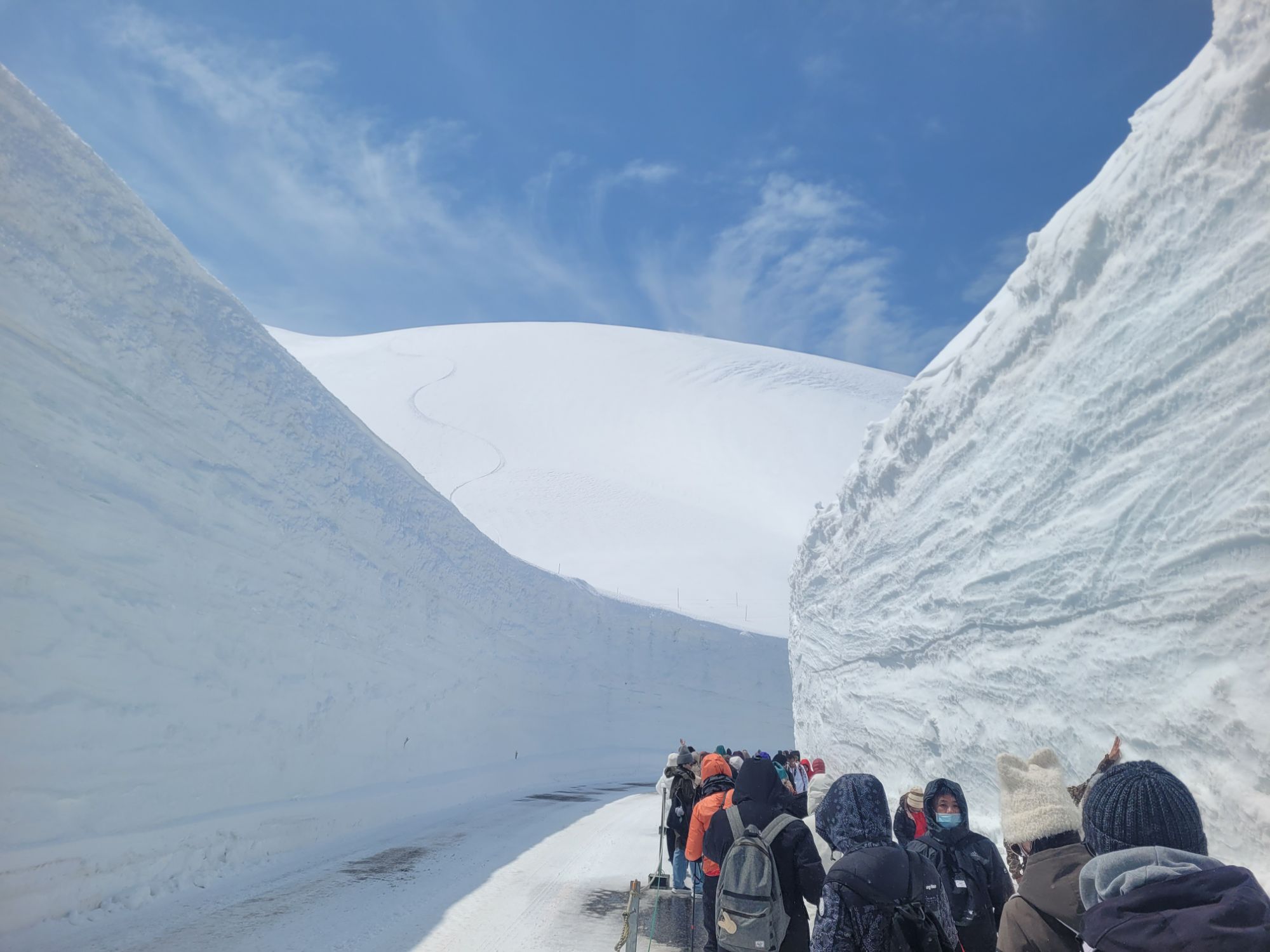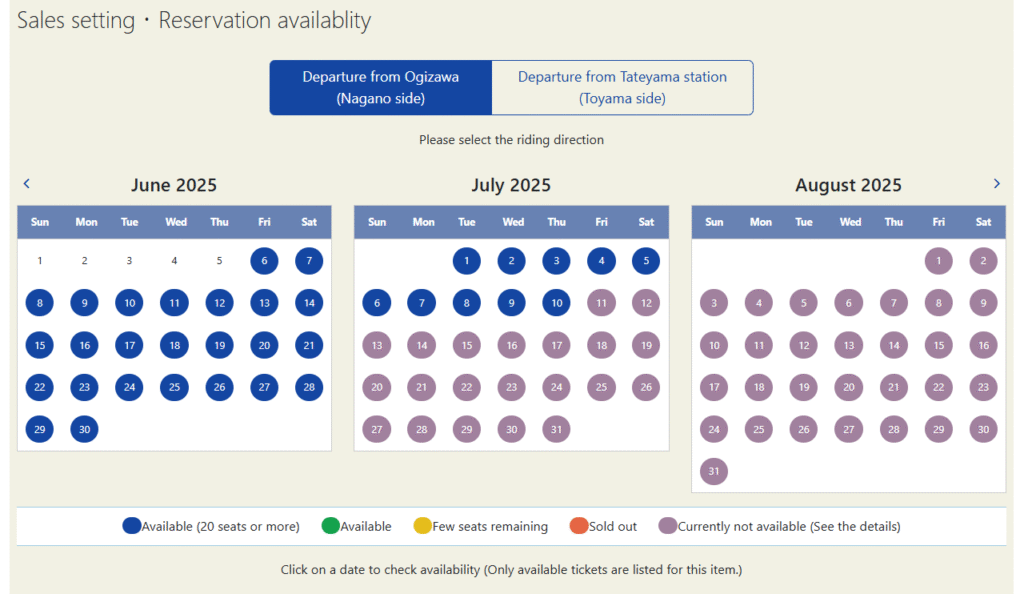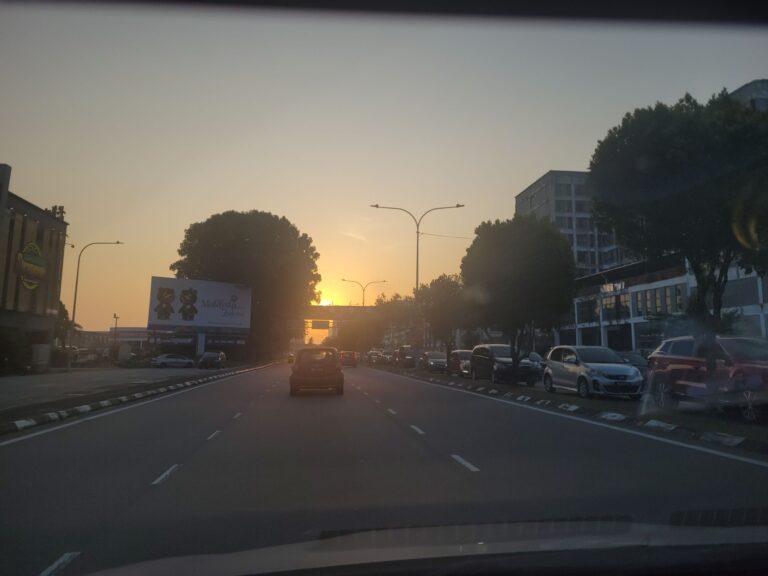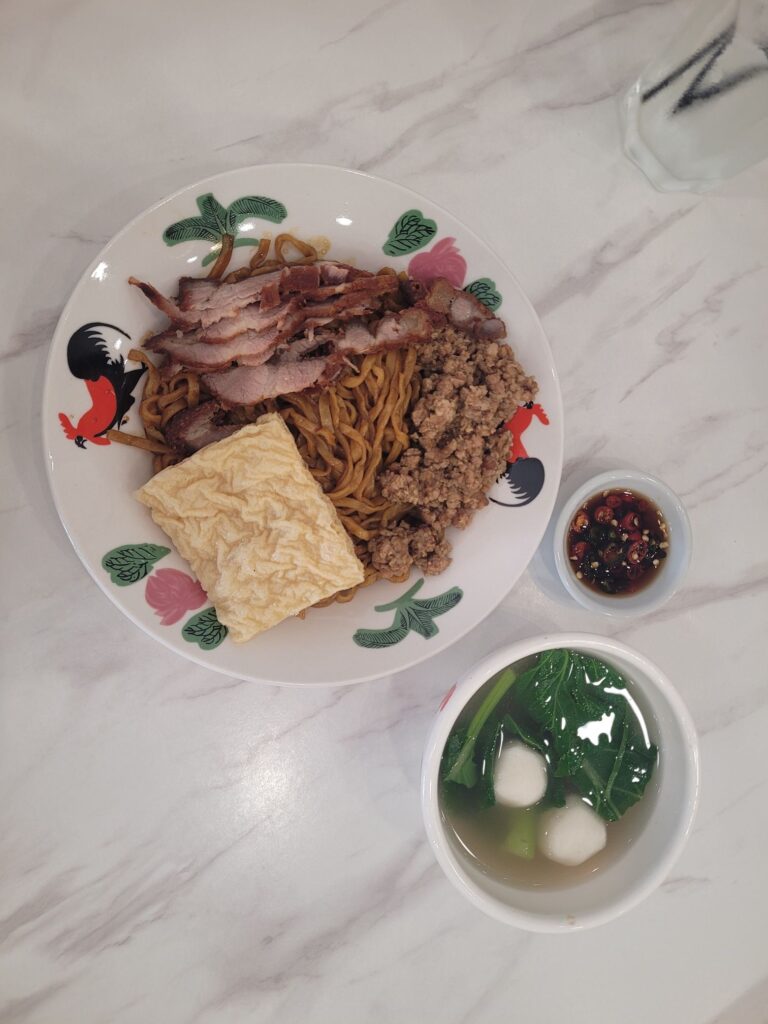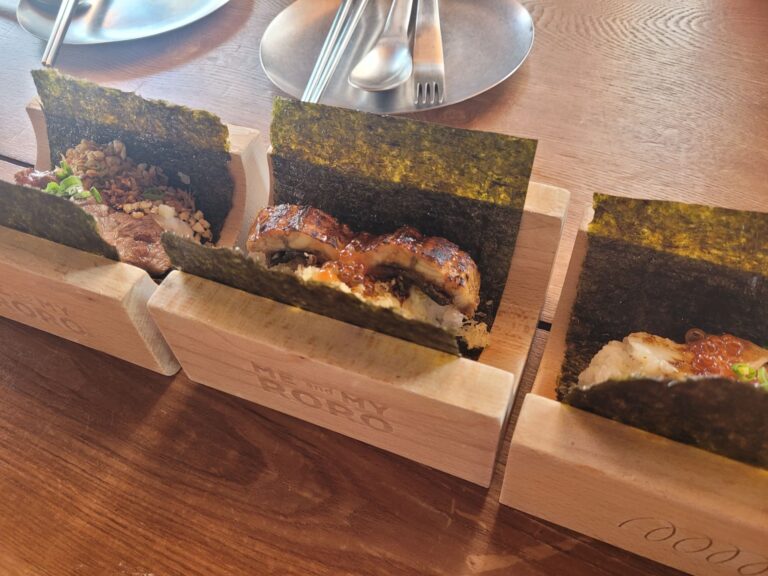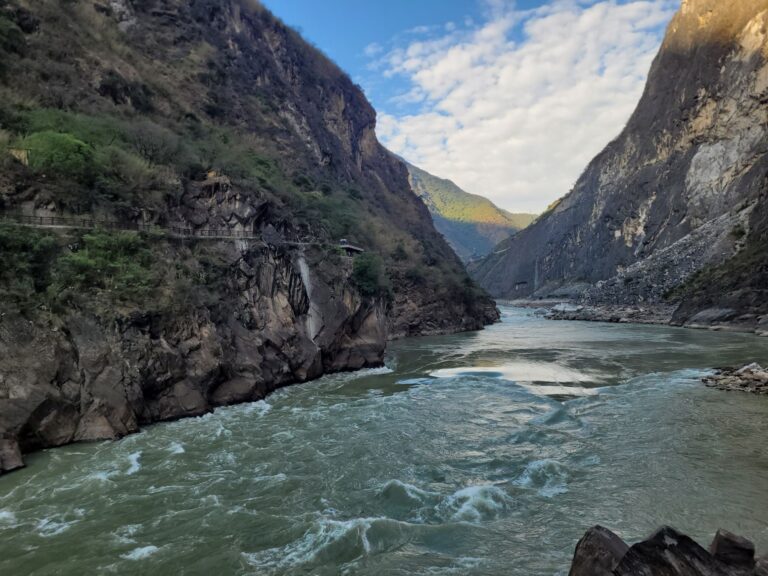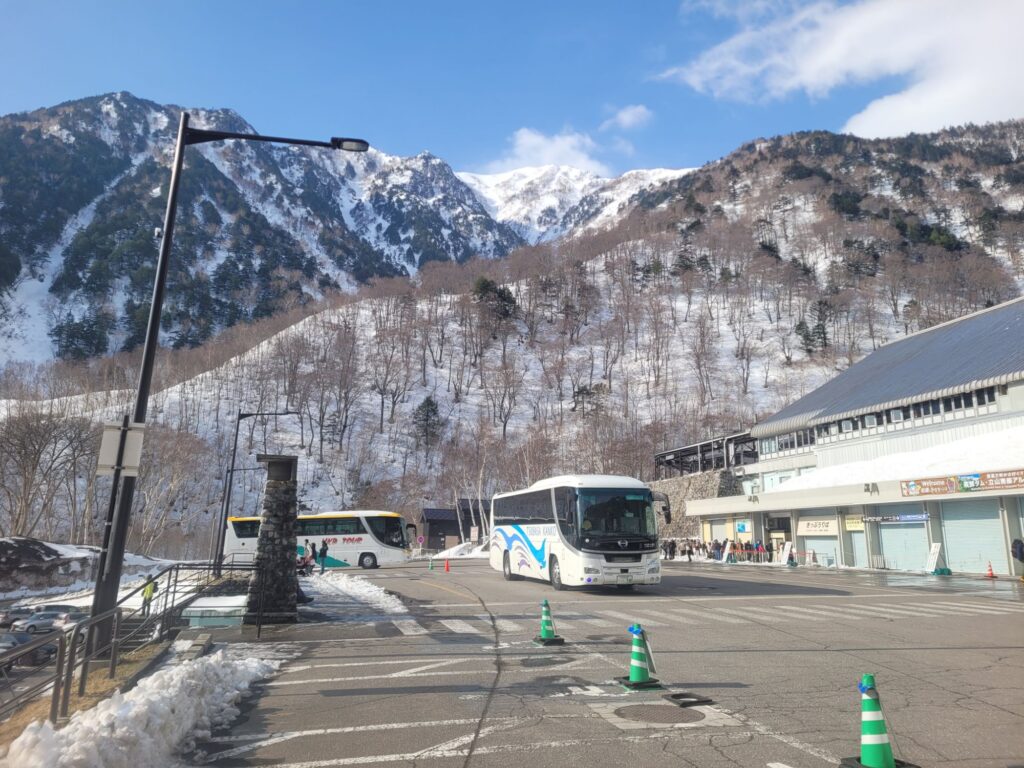
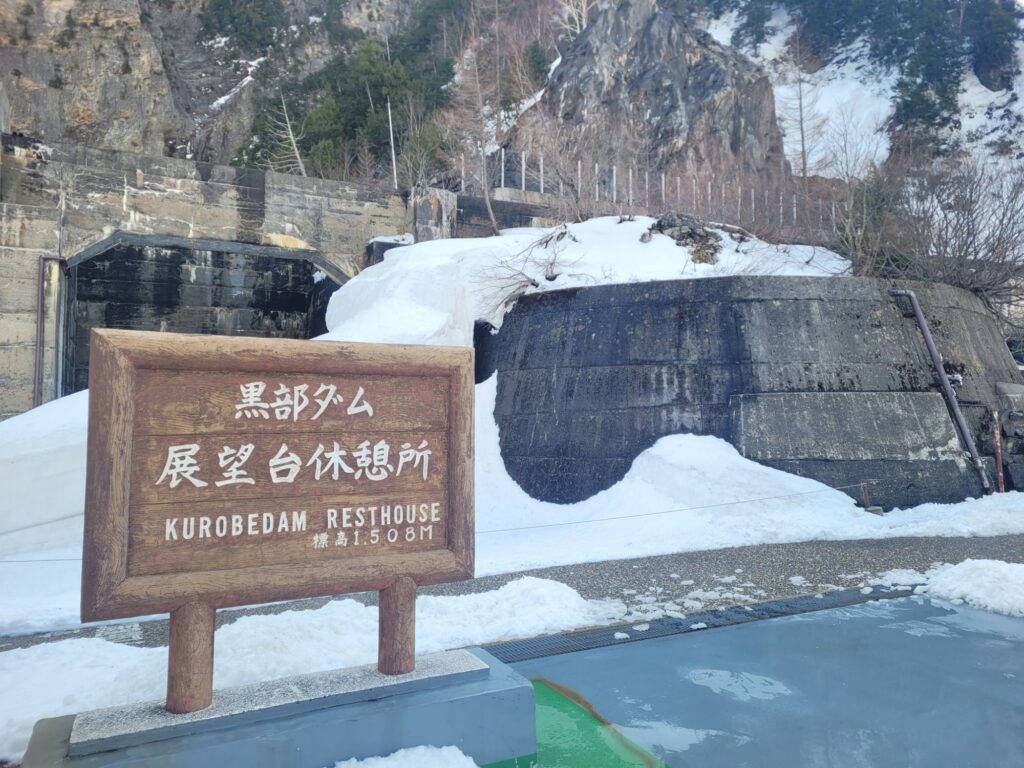
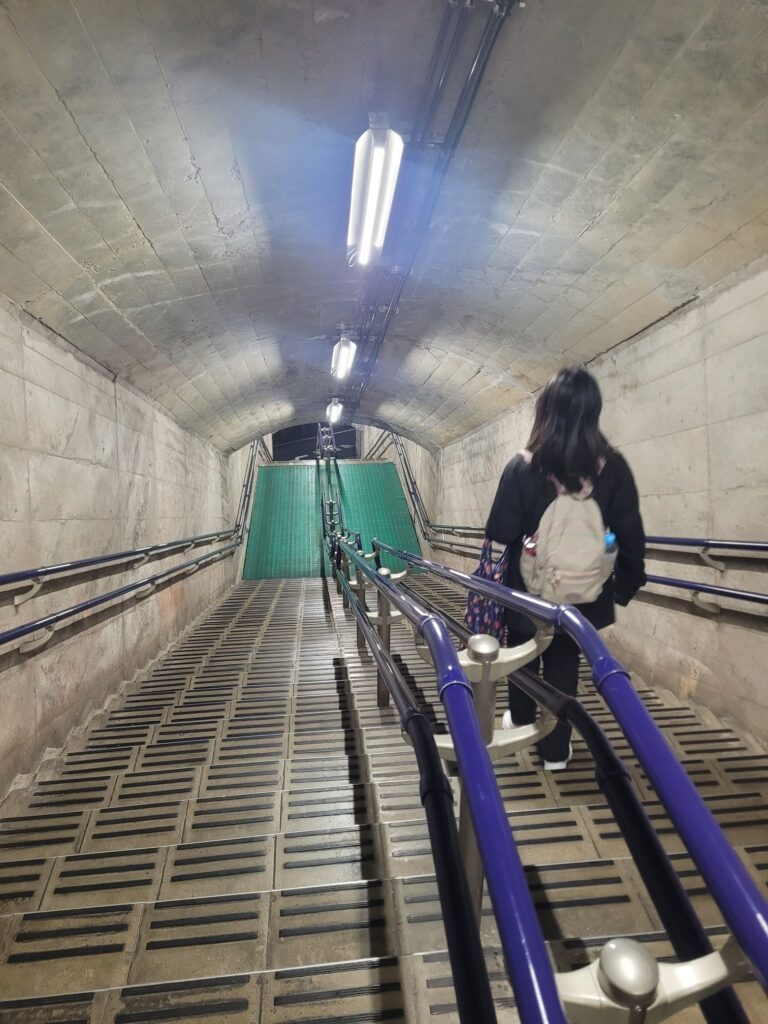
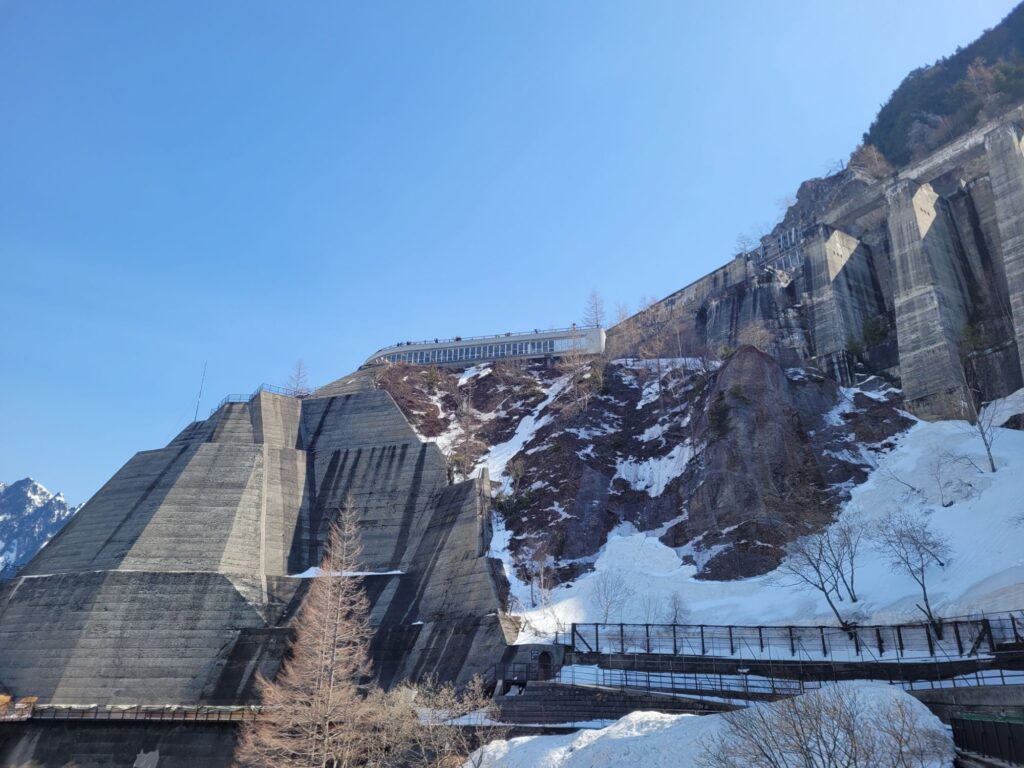

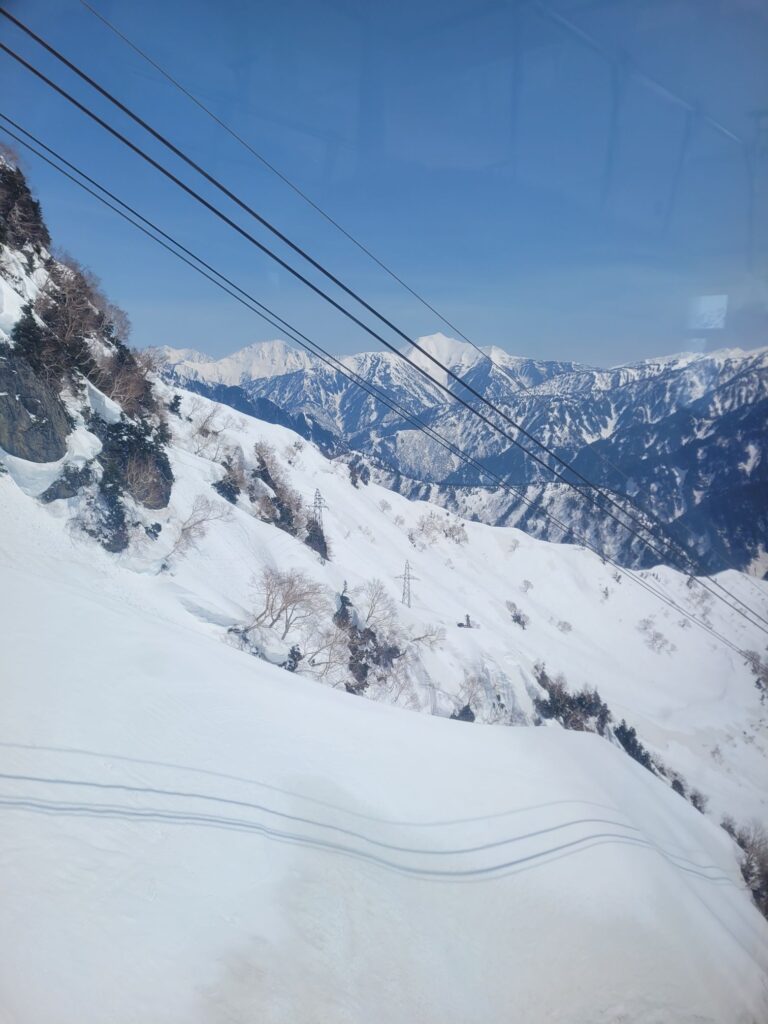
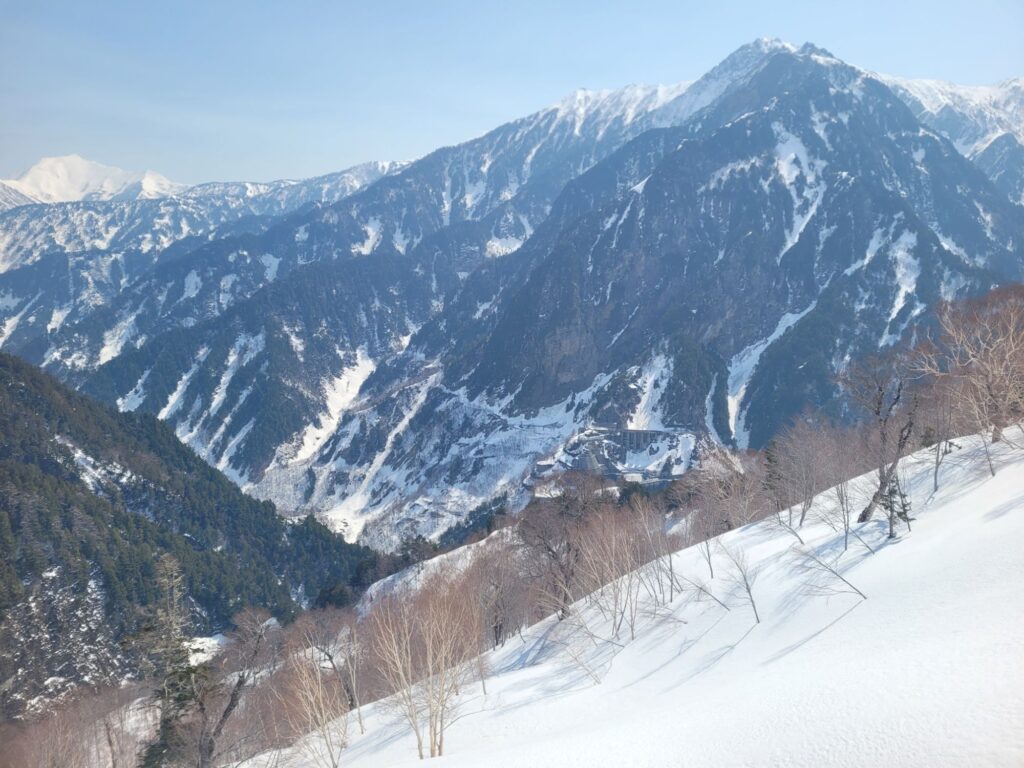


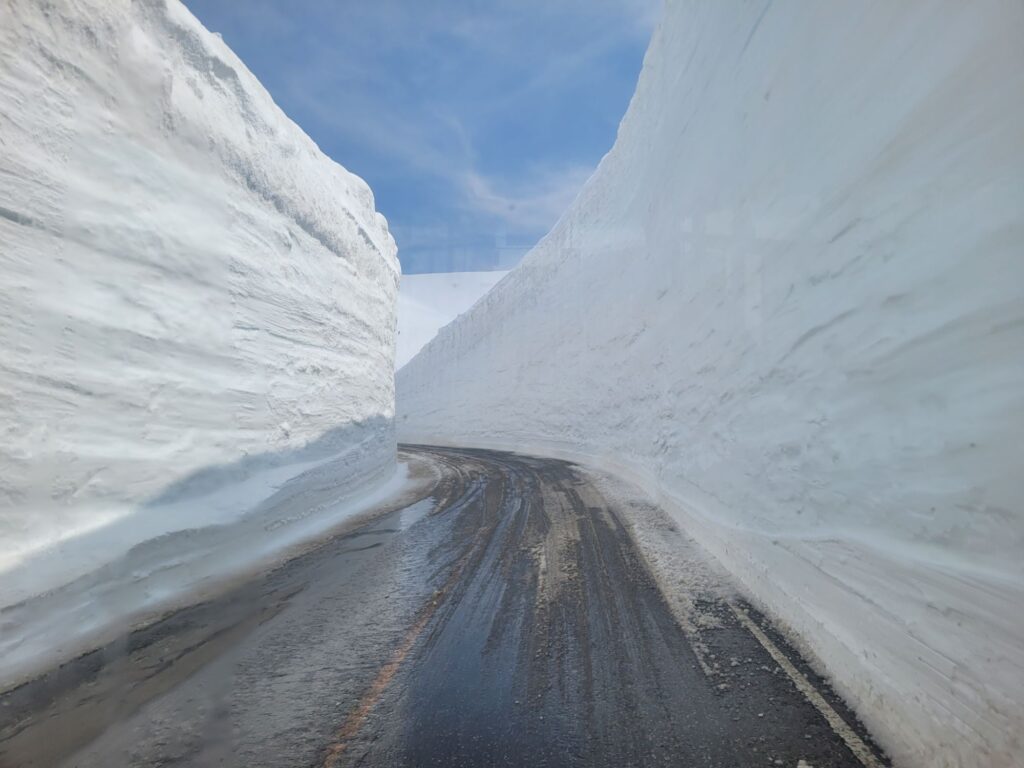


🌄 Introduction: Embark on an Unforgettable Journey Through the Japan Alps
The Tateyama Kurobe Alpine Route – Imagine soaring through breathtaking mountain landscapes, traversing towering snow walls that scrape the sky, and witnessing engineering marvels nestled deep within the “Roof of Japan”. This isn’t a dream; it’s the Tateyama Kurobe Alpine Route, a once-in-a-lifetime adventure waiting for you.
For travelers to Japan seeking an experience beyond the bustling cities and serene temples, and slightly off the classical Golden Route, the Tateyama Kurobe Alpine Route offers an unparalleled escape into raw, majestic nature. It’s a journey that appeals to adventure seekers, nature lovers, and anyone looking to be utterly captivated by the grandeur of the Japanese Alps. This comprehensive guide will walk you through everything you need to know – from understanding the route and picking the perfect season to navigating tickets, packing essentials, and crafting your ideal itinerary. Get ready to unlock one of Japan’s most spectacular treasures!
🗺️ Understanding the Tateyama Kurobe Alpine Route: Your Essential Overview
The Tateyama Kurobe Alpine Route is a magnificent and unique mountain sightseeing experience, stretching approximately 90 km (though the core scenic portion is often cited as 37.2 km) across the rugged Northern Japanese Alps. It connects Shinano Omachi Station in Nagano Prefecture (the eastern gateway) with Dentetsu Toyama Station in Toyama Prefecture (the western gateway). What makes this route truly special is its incredible elevation change – about a staggering 2000 meters (over 6,400 feet!), taking you from verdant valleys to alpine heights.
The route is a testament to human ingenuity coexisting harmoniously with formidable nature. Tunnels bore through mountains, cable cars ascend steep inclines, and ropeways glide over vast valleys, all designed to provide access to this otherwise remote alpine wilderness. It’s a journey that allows you to witness nature’s raw power and beauty, enhanced by impressive feats of engineering.
A Little History & Nature:
- Mt. Tateyama is one of Japan’s “Three Holy Mountains” (along with Mt. Fuji and Mt. Haku), historically a site of mountain worship.
- The construction of the Kurobe Dam in the post-WWII era was a monumental feat of engineering, overcoming incredible challenges.
- The route offers encounters with diverse flora and fauna, including rare alpine plants, ancient cedar forests at Bijodaira, and wild birds like the Rock Ptarmigan (Raicho) at Murodo. You might even spot a Japanese serow (antelope) or stoat.
The Diverse Modes of Transport
One of the most thrilling and memorable aspects of the Tateyama Kurobe Alpine Route is the variety of transportation you’ll use. Each offers a different perspective on the stunning landscape. The journey involves a seamless transition between six main modes:
- Tateyama Cable Car: (Tateyama Station ↔ Bijodaira) A powerful funicular that climbs a steep gradient through the forest.
- Tateyama Highland Bus: (Bijodaira ↔ Murodo) The longest leg, offering expansive views. In spring, this bus drives through the famous Snow Walls.
- Tateyama Tunnel Trolley Bus: (Murodo ↔ Daikanbo) An eco-friendly electric bus that travels through a tunnel directly under Mount Tateyama. It’s Japan’s highest altitude trolleybus.
- Tateyama Ropeway: (Daikanbo ↔ Kurobedaira) A breathtaking 1.7 km ride with no support pylons in the middle, offering unobstructed, panoramic “moving observatory” views.
- Kurobe Cable Car: (Kurobedaira ↔ Kurobeko) Uniquely, this entire cable car runs underground to protect the natural scenery and operate regardless of snow.
- Kanden Tunnel Electric Bus: (Kurobe Dam ↔ Ogizawa) Another eco-friendly electric bus that runs through a tunnel, famously passing the spot where engineers battled a massive fracture zone during its construction (watch out for this area with special lighting when you are on the bus).
Beyond these, you’ll likely use local trains (like the Toyama Chiho Railway to Tateyama Station) or local buses (like from Shinano Omachi to Ogizawa) to reach the route’s start/end points.

Key Attractions Along the Tateyama Kurobe Alpine Route:
Prepare to be mesmerized at every turn!
- Murodo (室堂): At 2,450 meters, Murodo is the highest point accessible by transport on the route and a central hub for sightseeing.
- Snow Corridor (雪の大谷): The star attraction in spring, where snowplows carve a road through accumulated snow, creating walls that can reach up to 20 meters high!
- Mikurigaike Pond (みくりが池): A stunning volcanic crater lake reflecting the surrounding peaks, best seen from June to October.
- Jigokudani (地獄谷 – Hell Valley): An area with volcanic gas emissions (trails often closed for safety).
- Hotel Tateyama: Japan’s highest-altitude hotel, offering a unique overnight experience.
- Kurobe Dam (黒部ダム): An awe-inspiring feat of engineering, Japan’s tallest dam stands at 186 meters.
- Water Discharge: Witness the powerful spectacle of water gushing from the dam between late June and mid-October.
- Observation Decks: Climb the 220 steps to the main observation deck for incredible views or take a more leisurely stroll across the dam itself.
- Kurobe Dam Museum: Learn about the challenging construction of the dam, a project that involved 10 million workers and tragically claimed 171 lives.
- Daikanbo (大観峰): Perched on a precipitous cliff, Daikanbo offers magnificent panoramic views of the Tateyama Mountain Range and Lake Kurobe from its “Cloud Terrace” observation deck. This is the boarding point for the spectacular Tateyama Ropeway.
- Kurobedaira (黒部平): A beautiful plateau with a garden, offering lovely views and connecting the Ropeway and the Kurobe Cable Car.
- Midagahara (弥陀ヶ原): A vast alpine wetland plateau registered under the Ramsar Convention, featuring nearly 3,000 small ponds (“ガキ田“). It’s known for rare alpine plants in summer and stunning autumn colors. Well-maintained boardwalks offer easy walks (e.g., a 40-minute loop). You might even experience a “sea of clouds” (雲海) here.
- Bijodaira (美女平): Home to a rich virgin forest of ancient Tateyama cedar and beech trees, some over 1,000 years old. It’s a prime spot for birdwatching, with over 60 species identified. Several walking trails allow you to immerse yourself in the serene forest.
- Shomyo Falls (称名滝): Japan’s tallest waterfall, with an impressive 350-meter drop. While briefly visible from the Tateyama Highland Bus (I failed to spot it when the bus stopped for it 😟), it’s best visited via a separate, short bus trip from Tateyama Station if time permits.
🌸☀️🍁❄️ When to Visit the Tateyama Kurobe Alpine Route: Seasonal Spectacles
The Tateyama Kurobe Alpine Route is a destination of dramatic seasonal transformations. The full route is typically open from April 15th to November 30th each year, and confirmed for these dates in 2025. It remains closed from December 1st to April 14th due to immense snowfall.
🌸 Spring Magic (Mid-April to June): Witnessing the Iconic Snow Walls (Yuki-no-Otani – 雪の大谷)
- The Main Event: This is prime time for the legendary Snow Walls in Murodo. Carved from snowdrifts that accumulate over winter, these corridors can reach breathtaking heights of 18, sometimes even 20 meters (over 60 feet)! The peak height is usually from opening day in mid-April through early May. Even in late June, walls can still tower over 10 meters.
- Experience: A dedicated section of the road near Murodo is opened for pedestrians, allowing you to walk between these colossal white cliffs – an unforgettable experience. But it can get very crowded with visitors given that it is one of the main highlights of the route.
- Wildlife: Keep an eye out for the Raicho (Ptarmigan), a special alpine bird considered a “messenger from God,” often spotted in its white winter plumage transitioning to mottled brown.
- What to Wear: Waterproof shoes/boots are essential as you’ll be walking on or near snow. Sunglasses are a must due to intense glare. Layers are key as temperatures can vary.
- Don’t be like me – I wore my usual running shoes, and I had to walk very very slowly. Also, I attempted to put on waterproof booties but ended up slipping and falling due to the lack of grip, and ended up just taking them off.
☀️ Summer Charm (Late June to August): Lush Greenery & Alpine Hiking Adventures
- The Great Outdoors: Summer unveils lush green landscapes, vibrant alpine flowers, and pleasant temperatures, making it the best season for hiking, trekking, and extended nature walks.
- Kurobe Dam Discharge: From late June to mid-October, witness the powerful and dramatic water discharge from the Kurobe Dam, a truly impressive sight and sound.
- Alpine Flora: Discover a variety of beautiful alpine plants in Murodo and Midagahara. Some snow patches may linger in Murodo into July or even August.
- What to Wear: While warm, the sun is strong at high altitudes. Wear clothing that covers your skin (light long sleeves/trousers), a hat, and apply sunscreen. Comfortable hiking shoes are recommended.
🍁 Autumn Hues (September to November): Breathtaking Fall Foliage
- A Kaleidoscope of Colors: Nature puts on a spectacular show as the mountainsides transform into a tapestry of fiery reds, vibrant yellows, oranges, and rich browns. The autumn foliage season typically lasts about six weeks.
- Peak Timing: The colors start changing at higher elevations like Murodo in late September, gradually descending to lower areas by early November. For the “three-tiered colored leaves” (三段紅葉) – snow at the peaks, autumn colors in the middle, and green at the base – aim for early to mid-October.
- What to Wear: It starts getting chilly, especially at higher altitudes. Snow can begin to fall in Murodo as early as October. Warm layers, including a windproof jacket, hat, and gloves, are essential.
❄️ Early Winter (November): A Glimpse of a Snowy Wonderland
- First Snows: As the season draws to a close, Tateyama and Murodo are often blanketed in fresh snow, offering a serene and fantastic wintery world before the route closes.
- Conditions: Temperatures frequently drop below freezing. Heavy snowfall and high winds can sometimes cause service suspensions, so checking the official website for operational status is crucial.
- What to Wear: Waterproof, non-slip shoes/boots are highly recommended due to icy and snowy conditions. Warm winter clothing is a must.
➡️ Navigating the Tateyama Kurobe Alpine Route: Your Step-by-Step Journey
Planning your traverse is key to a smooth experience. The route can be travelled in either direction, or you can opt for a round trip to a specific point like Murodo.
Choosing Your Starting Point: East vs. West
- Nagano Side (East to West): Start from Ogizawa Station, accessed via Shinano-Omachi. This direction is often slightly less crowded, especially in the mornings. But you will likely end up starting later compared to the other direction.
- Toyama Side (West to East): Start from Tateyama Station, accessed via Dentetsu-Toyama Station. This direction tends to be busier.
- Pro Tip: Consider your overall Japan itinerary and onward travel plans when deciding your direction. For example, if you’re heading towards Kanazawa or Takayama next, starting from Nagano and ending in Toyama might be logical.
Getting to the Alpine Route Entrances from Major Japanese Cities: Remember, the Japan Rail Pass will cover your journey to the gateway cities, but not the Alpine Route itself.
- From Tokyo:
- To Nagano Side: Take the Hokuriku Shinkansen to Nagano Station (approx. 80-100 mins), then an express bus to Ogizawa (approx. 100 mins). Alternatively, take the JR Azusa Limited Express to Matsumoto (approx. 2.5-3 hours), then the JR Oito Line to Shinano-Omachi Station (approx. 50-60 mins), followed by a local bus to Ogizawa (approx. 40 mins).
- To Toyama Side: Take the Hokuriku Shinkansen directly to Toyama Station (approx. 2-2.5 hours). From JR Toyama Station, walk to the adjacent Dentetsu Toyama Station and take the Toyama Chiho Railway to Tateyama Station (approx. 60 mins).
- From Osaka/Kyoto:
- To Nagano Side: Take the JR Thunderbird Limited Express to Kanazawa or Tsuruga, then the Hokuriku Shinkansen to Nagano, and proceed as above. Or, Shinkansen to Nagoya, then JR Shinano Limited Express to Matsumoto, and proceed as above.
- To Toyama Side: Take the JR Thunderbird Limited Express to Kanazawa or Tsuruga, then the Hokuriku Shinkansen to Toyama. Proceed as above to Tateyama Station.
- From Nagoya:
- To Nagano Side: Take the JR Shinano Limited Express to Matsumoto (approx. 2 hours), then the JR Oito Line to Shinano-Omachi, and bus to Ogizawa.
- To Toyama Side: Take the JR Hida Limited Express to Toyama (approx. 4 hours) or Shinkansen via Kanazawa.
A Typical Journey Through the Route (Example: Ogizawa to Tateyama Station – East to West)
The entire traverse takes a minimum of 6-7 hours without long stops. Plan for 8-9 hours to enjoy it comfortably.
- Ogizawa (扇沢) → Kurobe Dam (黒部ダム)
- Transport: Kanden Tunnel Electric Bus
- Duration: Approx. 16 minutes
- Kurobe Dam (黒部ダム) → Kurobeko (黒部湖) → Kurobedaira (黒部平)
- Walk across the dam (approx. 15 mins from bus station to cable car station).
- Transport: Kurobe Cable Car (from Kurobeko Station on the dam’s edge)
- Duration: Approx. 5 minutes
- Kurobedaira (黒部平) → Daikanbo (大観峰)
- Transport: Tateyama Ropeway
- Duration: Approx. 7 minutes
- Daikanbo (大観峰) → Murodo (室堂)
- Transport: Tateyama Tunnel Trolley Bus
- Duration: Approx. 10 minutes
- Murodo (室堂) → Bijodaira (美女平)
- Transport: Tateyama Highland Bus
- Duration: Approx. 50 minutes (views of Midagahara, Shomyo Falls in distance, Snow Walls in season)
- Bijodaira (美女平) → Tateyama Station (立山駅)
- Transport: Tateyama Cable Car
- Duration: Approx. 7 minutes
🎫 Tateyama Kurobe Alpine Route Tickets & Passes: Your Booking Essentials
Navigating the ticket system is straightforward once you know the basics.
- Purchasing Your Alpine Route Tickets:
- Day Tickets: Generally, tickets for the various segments or the full route are purchased on the day of travel at the various stations (Dentetsu Toyama, Tateyama, Ogizawa, Shinano-Omachi).
- Web Ticket Reservations: While most sections are first-come, first-served, advance web ticket reservations are possible and highly recommended for specific departure times on the Tateyama Cable Car (from Tateyama Station) and the Kanden Tunnel Electric Bus (from Ogizawa Station). This can save you significant waiting time, especially during peak seasons. On busy days, numbered tickets (整理券) may be issued for later departures if you don’t have a reservation. Check the release dates and availability on the website.

- Ticket Validity: Tickets for the entire one-way route are typically valid for 5 days from the date of purchase. This is fantastic as it allows for flexibility and overnight stays along the route.
- Cost: As an example, the full one-way route ticket from Shinano-Omachi to Dentetsu Toyama (or vice versa) is priced at 14,010 Yen for adults (as of 2025). Fares for children are about half price. Prices for partial routes or different start/end points vary. Always check the official website for the latest fares.
- Packaged Tours
- What they offer: Klook, Viator, GetYourGuide, and similar platforms primarily sell guided tours or bus packages that include the Tateyama Kurobe Alpine Route tickets as part of the overall itinerary.
- Convenience: These tours are designed for convenience, especially if you prefer not to manage individual tickets, transportation logistics, or simply want a guided experience. They often include round-trip bus travel from major cities like Tokyo, Nagoya, Osaka, or Kanazawa, and may combine the Alpine Route with other attractions like Kamikochi.
- Ticket Handling: With these tours, you typically pay a single price, and the tour operator handles the procurement of your Alpine Route tickets. You might receive all your tickets at a designated meeting point (e.g., a bus center) before departure.
- Reserved Times: Since these are organized tours, the tour operator will likely have secured reserved times for the Tateyama Cable Car and Kanden Tunnel Electric Bus, which are the segments where advance reservations are possible and highly recommended.
- Pricing: While convenient, these packages might be more expensive than arranging everything independently. However, they can sometimes offer “deals” or discounts as part of a bundle.
- Availability: Be aware that tours, especially during peak seasons like the Snow Wall period or autumn foliage, can sell out quickly.
- JR Pass Coverage: It’s crucial to remember that the Japan Rail Pass does NOT cover any transportation on the Tateyama Kurobe Alpine Route itself. It can be used to reach gateway cities like Nagano, Matsumoto, Shinano-Omachi (via JR lines), or Toyama.
- Recommended Passes for Travelers:
- Alpine-Takayama-Matsumoto Area Tourist Pass: This pass, offered by JR Central, can be an excellent option if you plan to explore the wider region, including Takayama, Matsumoto, and the Alpine Route. It typically covers the Alpine Route and relevant JR train lines in the area. Check its validity and coverage details here.
- Tateyama Kurobe Option Ticket (JR East): This used to be a popular add-on for JR East Pass holders, offering discounted travel on the Alpine Route. Check current availability and terms if you are using a JR East regional pass.
- Why Advance Booking (for specific segments) Matters: During peak times – especially the Snow Wall season (mid-April to early May, particularly Golden Week), summer holidays (Obon in mid-August), and autumn foliage weekends (mid-September to mid-October), queues can be very long. Securing a web ticket for the initial Tateyama Cable Car or Kanden Tunnel Electric Bus can make your day much smoother.
🎒 Planning Your Tateyama Kurobe Adventure: Essential Tips for Travelers
A little planning goes a long way in ensuring a memorable trip through this alpine wonderland.
One-Day vs. Multi-Day Itinerary: Which is Right for You?
- One-Day Traverse: It’s definitely possible to transit the entire route in a single day. This typically takes 6-9 hours, depending on your pace and how long you stop at each point. However, it requires an early start and can feel a bit rushed, especially during peak season.
- Overnight Stay: For a more relaxed and immersive experience, consider an overnight stay. This allows for more time for hiking, photography, and soaking in the atmosphere.
- Accommodation on the Route: Options include Hotel Tateyama (at Murodo, Japan’s highest hotel), Midagahara Hotel (on the Midagahara plateau), and mountain lodges like Mikurigaike Onsen (near Murodo, with hot springs). Book well in advance as these are popular and will likely sell out.
- Accommodation at Gateway Towns: Staying in Toyama City, Omachi Onsenkyo (near Shinano-Omachi), or Matsumoto also provides good bases, allowing you to start earlier and maximize your time there.
Luggage Forwarding Service (Lifesaving!)
This service is highly recommended! Navigating the multiple transfers with large suitcases is cumbersome and impractical. I’ve seen people dragging small luggage around which makes things difficult.
- How it Works: You can send your main luggage from one end of the route to the other (or to/from selected accommodations in gateway cities) on the same day. You travel light with just a daypack and pick up your luggage again at the end of your trip.
- Drop-off/Pick-up Locations:
- Common locations include Dentetsu Toyama Station, JR Shinano-Omachi Station, and various hotels in Toyama City and Omachi Onsenkyo.
- Important: This service is generally not available for direct pickup/dropoff at Tateyama Station, Ogizawa Station, or hotels located directly on the Alpine Route (like Hotel Tateyama or Midagahara Hotel), though these hotels can often arrange forwarding to the service points.
- Operating Period & Times: The service operates during the Alpine Route’s open season but may end earlier in November (e.g., sometimes around November 3rd for some forwarding routes – check the official website for exact dates for your travel period).
- Drop-off is typically in the morning (e.g., between 7:40/8:00 AM and 10:30/11:10 AM at Shinano-Omachi). Arrive 20-30 minutes early.
- If you need to depart earlier, make sure your hotel offers the service as it would allow for you to make payment, fill up a tag, and leave your luggage with the hotel.
- Pick-up is usually in the afternoon/evening (e.g., between 3:30/4:00 PM and 6:00/8:00 PM at Toyama).
- Cost & Restrictions: Around 4000 JPY per bag (e.g., Shinano Omachi to Toyama) from my experience. There are size and weight restrictions. Valuables, fragile items, cash, skis, and snowboards are usually not accepted or are excluded from liability. Overweight/oversized baggage may incur extra charges. Timely delivery cannot always be guaranteed due to weather or road congestion.
What to Pack for the Tateyama Kurobe Alpine Route:
Temperatures can vary dramatically between the base and Murodo. Layering is key!
- Clothing:
- Layers: T-shirt, long-sleeved shirt, fleece or sweater, and a waterproof/windproof outer jacket.
- Warm hat, gloves, and scarf, especially in spring, autumn, and early winter.
- Footwear: Comfortable, sturdy walking shoes are essential. If visiting in spring (Snow Walls) or late autumn/early winter, waterproof shoes or boots are highly advisable.
- Sun Protection: Sunglasses (critical with snow glare!), sunscreen, and a sun hat, even on cloudy days, as UV radiation is stronger at high altitudes.
- Rain Gear: A light poncho or waterproof jacket, as mountain weather can change quickly.
- Daypack: To carry essentials like water, snacks, camera, extra layers.
- Food & Amenities on the Route:
- Restaurants and cafes are available at major stations like Murodo (Hotel Tateyama has dining options), Kurobedaira, Kurobe Dam Resthouse, and Ogizawa. Offerings include local specialties like “Kurobe Dam Curry” (shaped like the dam!) and Toyama’s “Fried White Shrimp on Rice Set Meal.”
- It’s a good idea to bring some of your own snacks and drinks, especially if hiking or if you have dietary restrictions, as options can be limited and pricey.
- You can also buy ekiben (boxed lunches) at gateway stations to enjoy at scenic spots.
Additional Information
- Managing Crowds:
- Peak Times: The route is busiest during:
- Snow Wall season: Mid-April to Golden Week (early May).
- Obon holiday: Mid-August.
- Weekends during autumn foliage: Mid-September to mid-October.
- During these periods, expect queues for tickets and transport, potentially adding 1-2 hours of waiting time. Starting very early or using web ticket reservations can help.
- Peak Times: The route is busiest during:
- Checking Official Information: Always check the official Tateyama Kurobe Alpine Route website (often available in English) before your trip and even on the day of travel for:
- Current opening dates and times.
- Up-to-date timetables for all transport.
- Weather conditions and any service suspensions (especially important in spring and late autumn due to snow/wind).
- Information on the Snow Wall height or autumn foliage status.
- Other Practicalities:
- Cash: While major stations and hotels may accept credit cards, it’s wise to carry sufficient cash for smaller purchases, snacks, and lockers.
- Accessibility: Staff are generally helpful. If you have mobility concerns or are a wheelchair user, it’s advisable to contact the Alpine Route administration in advance for guidance.
🗓️ Sample Itineraries for the Tateyama Kurobe Alpine Route
Here are a few ideas to help you visualize your trip:
- The Express One-Day Full Traverse (e.g., Nagano Start):
- Early morning: Travel from Nagano/Matsumoto to Shinano-Omachi, then bus to Ogizawa.
- Morning/Afternoon: Traverse the entire route (Ogizawa → Kurobe Dam → Kurobedaira → Daikanbo → Murodo → Bijodaira → Tateyama St.). Allow brief stops at key points.
- Late Afternoon/Evening: From Tateyama St., train to Toyama, then onward travel. Use luggage forwarding.
- The Murodo Highlights Round Trip (e.g., from Toyama):
- Morning: Travel from Toyama to Tateyama St., then cable car and bus up to Murodo.
- Day: Explore Murodo – walk the Snow Walls (spring), hike around Mikurigaike Pond, visit the nature center.
- Afternoon: Descend back to Tateyama St. and return to Toyama. Good if short on time or focused on the Snow Walls.
- The Relaxed Two-Day Journey (with overnight stay at Murodo):
- Day 1: Start from either end. Ascend to Murodo, check into Hotel Tateyama or Mikurigaike Onsen. Explore Murodo, perhaps a short hike. Enjoy sunset/stargazing.
- Day 2: Morning exploration/hiking around Murodo. Continue the traverse, taking ample time at Kurobe Dam and other viewpoints. Exit from the other end of the route in the afternoon.
My Experience
It was one of the best experiences during my latest trip to Japan. Before this I had only visited the Golden Route and was unsure whether to venture out further to other parts of Japan. I certainly did not regret it. The only challenge was finding information regarding how to plan this part of my itinerary and I hope that this post will help you in your journey.
I managed to purchase the Web Tickets online, despite this trip being a last minute one where I missed the release of the tickets. I just checked the site every few days and I noted that tickets would tend to pop up (likely refunded people due to the free cancellation policy). A few days before departing, they also released additional tickets to meet demand.
I planned to visit on the 3rd day following the reopening of the route hence it was a peak period. When I was in Japan and checking the homepage, it turned out that the route was closed due to poor weather with ongoing snow and inability to clear the snow corridor for the bus for the first two days. I was so so so worried about not being able to travel through the Alpine Route as not only it was supposed to be the highlight of my trip, but also it was key for me to get across the Japanese Alps and continue on with my itinerary, else I would be stranded in the middle of nowhere in Shinano-Omachi. Another fear would be that my luggage would be on the way to Toyama but I’m still stuck somewhere along the Alpine Route. Thankfully, the route opened up some time in the morning on the day I started embarking along my journey.
Decide whether to start from East or West. I spent a night at Shinano-Omachi, which allowed me to meet my earlier ticket timing, plus also helps with the luggage delivery. I took the earliest bus out to avoid the risk of failing to collect my tickets and missing my timed entry, but when I got there, there was no one queuing for the machine and collection was smooth and fast. There was a huge queue at Ogizawa for the day tickets but from what I observed it moved rather fast and seemed possible to obtain rather easily if you come early enough.
Make sure you bring a copy of the timetable, be it physical or digital to keep track of the time for the next form of transportation so everything goes smoothly. Do expect that there’ll be a queue so proceed to the next point in advance. If the cable car is at 1130am for example, you won’t be able to board if you don’t queue up before that.
My wife and I were heavily underprepared once we got the Murodo. We were only prepared for the cold hence dressed warmly (but the sun also helped). We did not have waterproof shoes meant for the snow, nor sunglasses for the strong UV reflections. My eyes took a while to get used to normal light after spending time out in the snow. I fell down a few times due to my shoes as well.
But it was worth it – it was the first time I touched snow in my life and I made a mini-snowman.❄️ I ventured along the snow plains of Murodo despite being inadequately prepared as I was utterly mesmerized by the experience.
Food options are limited and depending on the time you want to eat, you may be crowded out and spend time waiting, do bring your own snacks.
Try to purchase your train tickets from Tateyama to Toyama beforehand if you can. We were trying to rush for the limited express train and there were a lot of clueless tourists trying to buy the ticket on the single automated machine. I could clearly tell that others were annoyed. Also if you want to take the limited express train, make sure you have a limited express ticket.
FAQs
How long does it take to complete the entire Tateyama Kurobe Alpine Route?
To traverse the full route from one end to the other (e.g., Ogizawa to Tateyama Station, or vice versa), you should allow a minimum of 6 to 7 hours. However, to truly enjoy the sights, take short walks, and account for potential waiting times for transport, it’s more realistic to plan for 8 to 9 hours for a one-way journey.
When is the absolute best time to see the famous Snow Walls (Yuki-no-Otani)?
The Snow Walls at Murodo are accessible from the route’s opening in mid-April until late June. For the tallest walls (often reaching 18-20 meters), aim to visit from mid-April to early May. The “Yuki-no-Otani Walk” event, where you can walk beside the giant snow corridors, typically runs during this period.
When is the best time to see autumn leaves on the Alpine Route?
Autumn foliage is spectacular and typically occurs from late September to early November. The colors start changing at higher elevations (like Murodo) in late September and gradually move down to lower areas. For the best chance to see a vibrant tapestry of colors, and possibly the “three-tiered colored leaves” (snow at peaks, autumn colors mid-mountain, green at the base), early to mid-October is often ideal.
Is the Tateyama Kurobe Alpine Route suitable for children or elderly travelers?
Yes, the route is generally accessible and enjoyable for various ages and fitness levels, as most of the travel is by vehicles. There are paved paths at key stops. However, there is walking involved between transport modes and at sightseeing spots
Can I drive my own car along the Tateyama Kurobe Alpine Route?
No, private vehicles are not allowed on the main sections of the Alpine Route (between Tateyama Station and Ogizawa)
What happens if the weather is bad? Can transport be suspended?
Yes, severe weather, especially heavy snow, fog, or strong winds, can sometimes lead to temporary suspensions or delays of certain transport sections, particularly the Tateyama Highland Bus or the Tateyama Ropeway. This is more common in early spring and late autumn (especially November)
✨ Conclusion: Your Gateway to Japan’s Majestic Mountains
The Tateyama Kurobe Alpine Route is more than just a journey; it’s an immersive experience that showcases the stunning power and beauty of Japan’s Northern Alps. From the dizzying heights of the Snow Walls to the engineering marvel of the Kurobe Dam and the serene beauty of alpine meadows, every segment offers a new wonder. It’s a chance to witness landscapes unlike any other in Japan, creating memories that will undoubtedly last a lifetime.
So, are you ready to answer the call of the mountains? Start planning your unforgettable alpine adventure on the Tateyama Kurobe Alpine Route today, and prepare to be utterly captivated by Japan’s majestic natural splendor!
Explore other articles about Japan here!

